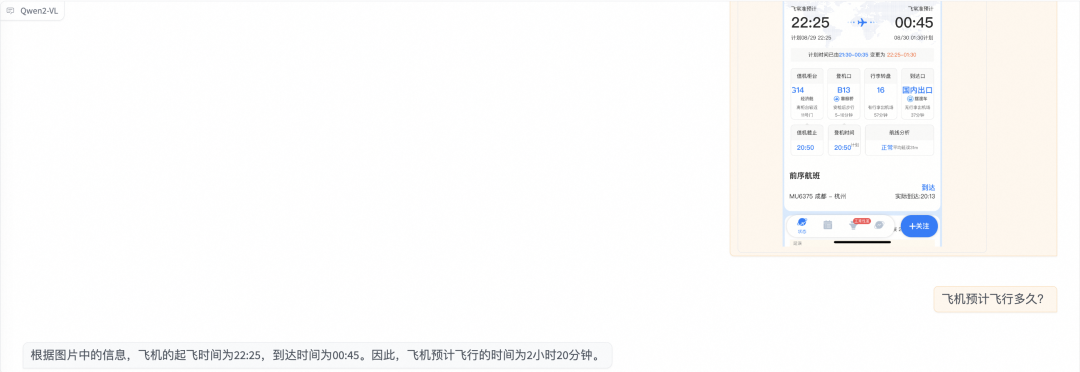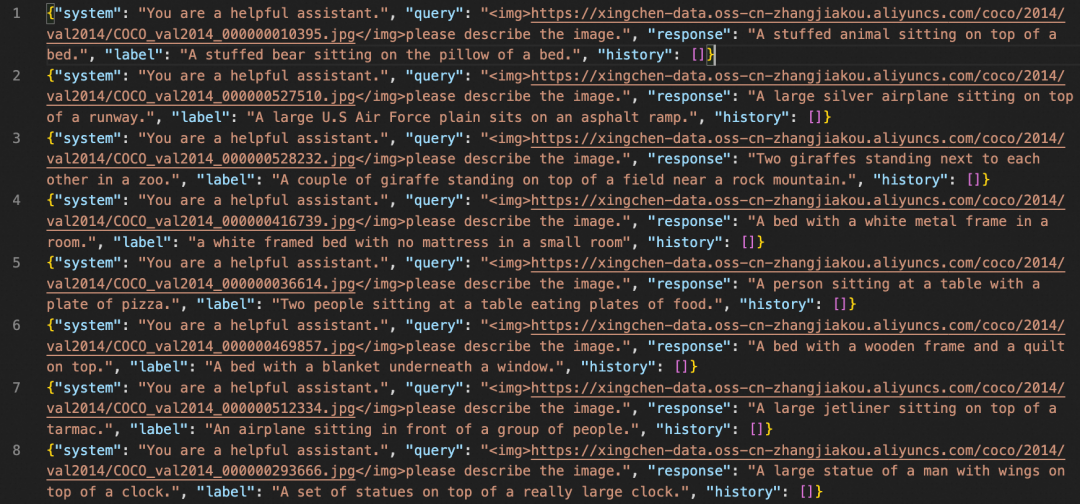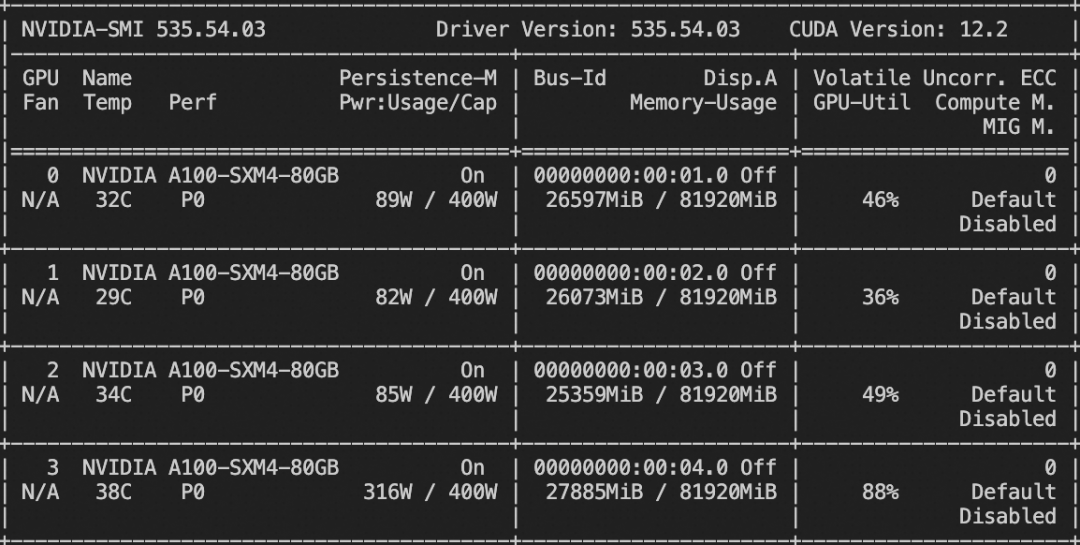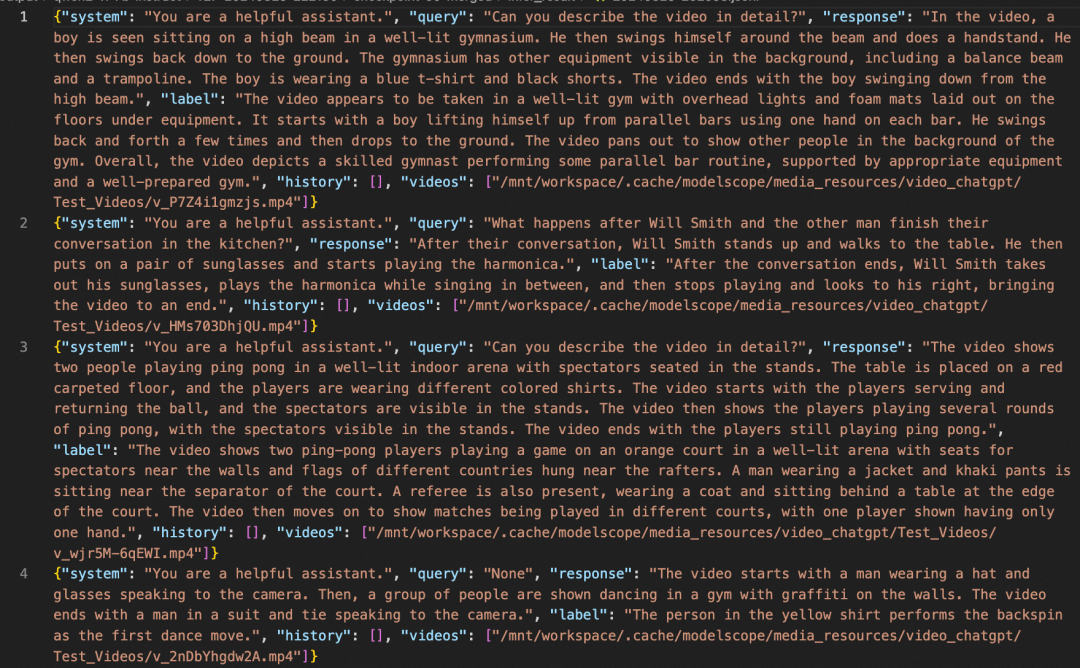最近这一两周看到不少互联网公司都已经开始秋招发放Offer。
不同以往的是,当前职场环境已不再是那个双向奔赴时代了。求职者在变多,HC 在变少,岗位要求还更高了。
最近,我们又陆续整理了很多大厂的面试题,帮助一些球友解惑答疑,分享技术面试中的那些弯弯绕绕。
喜欢本文记得收藏、关注、点赞。更多实战和面试交流,文末加入我们
技术交流

经过了一年的不懈努力,通义千问团队对 Qwen-VL 模型进行重大更新,推出 Qwen2-VL。
Qwen2-VL 有什么新功能?
-
增强的图像理解能力:Qwen2-VL显著提高了模型理解和解释视觉信息的能力,为关键性能指标设定了新的基准
-
高级视频理解能力:Qwen2-VL具有卓越的在线流媒体功能,能够以很高的精度实时分析动态视频内容
-
集成的可视化agent功能:Qwen2-VL 现在无缝整合了复杂的系统集成,将 Qwen2-VL 转变为能够进行复杂推理和决策的强大可视化代理
-
扩展的多语言支持:Qwen2-VL 扩展了语言能力,以更好地服务于多样化的全球用户群,使 Qwen2-VL 在不同语言环境中更易于访问和有效
模型结构
- Qwen2-VL 的一项关键架构改进是实现了动态分辨率支持(Naive Dynamic Resolution support)。与上一代模型Qwen-VL不同,Qwen2-VL 可以处理任意分辨率的图像,而无需将其分割成块,从而确保模型输入与图像固有信息之间的一致性。这种方法更接近地模仿人类的视觉感知,使模型能够处理任何清晰度或大小的图像。

- 另一个关键的架构增强是Multimodal Rotary Position Embedding (M-ROPE) 的创新。通过将original rotary embedding分解为代表时间和空间(高度和宽度)信息的三个部分,M-ROPE 使 LLM 能够同时捕获和集成 1D 文本、2D视觉和 3D 视频位置信息。这使 LLM 能够充当强大的多模态处理器和推理器。

模型效果
在 7B 规模下,Qwen2-VL-7B成功保留了对图像、多图像和视频输入的支持,以更具成本效益的模型大小提供具有竞争力的性能。具体而言,Qwen2-VL-7B在文档理解任务(例如 DocVQA)和通过 MTVQA 评估的图像多语言文本理解方面表现出色,建立了非常优秀的性能。

本次Qwen2-VL推出一款更小的 2B 模型,该模型针对潜在的移动部署进行了优化。尽管参数量只有2B,但该模型在图像、视频和多语言理解方面表现出色。与其他类似规模的模型相比,它在视频相关任务、文档理解和一般场景问答方面表现尤为出色。

模型下载
本次Qwen2-VL开源了两个尺寸的模型,Qwen2-VL-2B-Instruct 和 Qwen2-VL-7B-Instruct,以及其GPTQ和AWQ的量化版本。
模型链接:
Qwen2-VL-2B-Instruct:https://www.modelscope.cn/models/qwen/Qwen2-VL-2B-Instruct
Qwen2-VL-7B-Instruct:https://www.modelscope.cn/models/qwen/Qwen2-VL-7B-Instruct
推荐使用ModelScope CLI下载模型
modelscope download --model=qwen/Qwen2-VL-7B-Instruct --local_dir ./Qwen2-VL-7B-Instruct
模型体验
1 游戏视频理解:

2 数学几何求解:

3 OCR识别

模型推理
transformers推理
安装依赖:
pip install git+https://github.com/huggingface/transformers
pip install qwen-vl-utils
模型推理代码-单图推理
from PIL import Image
import torch
from transformers import Qwen2VLForConditionalGeneration, AutoTokenizer, AutoProcessor
from qwen_vl_utils import process_vision_info
from modelscope import snapshot_download
model_dir = "/mnt/workspace/Qwen2-VL-2B-Instruct"
# Load the model in half-precision on the available device(s)
model = Qwen2VLForConditionalGeneration.from_pretrained(model_dir, device_map="auto", torch_dtype = torch.float16)
min_pixels = 256*28*28
max_pixels = 1280*28*28
processor = AutoProcessor.from_pretrained(model_dir, min_pixels=min_pixels, max_pixels=max_pixels)
messages = [{"role": "user", "content": [{"type": "image", "image": "https://qianwen-res.oss-cn-beijing.aliyuncs.com/Qwen-VL/assets/demo.jpeg"}, {"type": "text", "text": "Describe this image."}]}]
# Preparation for inference
text = processor.apply_chat_template(messages, tokenize=False, add_generation_prompt=True)
image_inputs, video_inputs = process_vision_info(messages)
inputs = processor(text=[text], images=image_inputs, videos=video_inputs, padding=True, return_tensors="pt")
inputs = inputs.to('cuda')
# Inference: Generation of the output
generated_ids = model.generate(**inputs, max_new_tokens=128)
generated_ids_trimmed = [out_ids[len(in_ids):] for in_ids, out_ids in zip(inputs.input_ids, generated_ids)]
output_text = processor.batch_decode(generated_ids_trimmed, skip_special_tokens=True, clean_up_tokenization_spaces=False)
print(output_text)
模型推理代码-多图推理
# Messages containing multiple images and a text query
messages = [{"role": "user", "content": [{"type": "image", "image": "file:///path/to/image1.jpg"}, {"type": "image", "image": "file:///path/to/image2.jpg"}, {"type": "text", "text": "Identify the similarities between these images."}]}]
# Preparation for inference
text = processor.apply_chat_template(messages, tokenize=False, add_generation_prompt=True)
image_inputs, video_inputs = process_vision_info(messages)
inputs = processor(text=[text], images=image_inputs, videos=video_inputs, padding=True, return_tensors="pt")
inputs = inputs.to('cuda')
# Inference
generated_ids = model.generate(**inputs, max_new_tokens=128)
generated_ids_trimmed = [out_ids[len(in_ids):] for in_ids, out_ids in zip(inputs.input_ids, generated_ids)]
output_text = processor.batch_decode(generated_ids_trimmed, skip_special_tokens=True, clean_up_tokenization_spaces=False)
print(output_text)
模型推理代码-视频理解
# Messages containing a video and a text query
messages = [{"role": "user", "content": [{"type": "video", "video": "file:///path/to/video1.mp4", 'max_pixels': 360*420, 'fps': 1.0}, {"type": "text", "text": "Describe this video."}]}]
# Preparation for inference
text = processor.apply_chat_template(messages, tokenize=False, add_generation_prompt=True)
image_inputs, video_inputs = process_vision_info(messages)
inputs = processor(text=[text], images=image_inputs, videos=video_inputs, padding=True, return_tensors="pt")
inputs = inputs.to('cuda')
# Inference
generated_ids = model.generate(**inputs, max_new_tokens=128)
generated_ids_trimmed = [out_ids[len(in_ids):] for in_ids, out_ids in zip(inputs.input_ids, generated_ids)]
output_text = processor.batch_decode(generated_ids_trimmed, skip_special_tokens=True, clean_up_tokenization_spaces=False)
print(output_text)
vLLM推理
安装依赖
pip install git+https://github.com/fyabc/vllm.git@add_qwen2_vl_new
启动OpenAI接口服务
python -m vllm.entrypoints.openai.api_server --served-model-name Qwen2-VL-7B-Instruct --model model_path
调用服务-https
curl http://localhost:8000/v1/chat/completions \
-H "Content-Type: application/json" \
-d '{
"model": "Qwen2-VL-7B-Instruct",
"messages": [
{"role": "system", "content": "You are a helpful assistant."},
{"role": "user", "content": [
{"type": "image_url", "image_url": {"url": "https://modelscope.oss-cn-beijing.aliyuncs.com/resource/qwen.png"}},
{"type": "text", "text": "What is the text in the illustrate?"}
]}
]
}'
调用服务-sdk
from openai import OpenAI
# Set OpenAI's API key and API base to use vLLM's API server.
openai_api_key = "EMPTY"
openai_api_base = "http://localhost:8000/v1"
client = OpenAI(
api_key=openai_api_key,
base_url=openai_api_base,
)
chat_response = client.chat.completions.create(
model="Qwen2-7B-Instruct",
messages=[
{"role": "system", "content": "You are a helpful assistant."},
{"role": "user", "content": [
{"type": "image_url", "image_url": {"url": "https://modelscope.oss-cn-beijing.aliyuncs.com/resource/qwen.png"}},
{"type": "text", "text": "What is the text in the illustrate?"},
]},
]
)
print("Chat response:", chat_response)
模型微调
我们使用swift对qwen2-vl-7b-instruct进行微调。swift是魔搭社区官方提供的大模型与多模态大模型微调推理框架。
swift开源地址:
https://github.com/modelscope/swift
通常,多模态大模型微调会使用自定义数据集进行微调。在这里,我们将展示可直接运行的demo。
在开始微调之前,请确保您的环境已准备妥当。
git clone https://github.com/modelscope/swift.git
cd swift
pip install -e .[llm]
pip install pyav qwen_vl_utils
图像描述微调
我们使用 coco-en-mini 数据集进行微调,该数据集的任务是对图片内容进行描述。您可以在 modelscope 上找到该数据集:https://modelscope.cn/datasets/modelscope/coco_2014_caption/summary
# 默认会将lora_target_modules设置为llm的所有linear
CUDA_VISIBLE_DEVICES=0,1,2,3 NPROC_PER_NODE=4 swift sft \
--model_type qwen2-vl-7b-instruct \
--model_id_or_path qwen/Qwen2-VL-7B-Instruct \
--sft_type lora \
--dataset coco-en-mini#20000 \
--deepspeed default-zero2
如果要使用自定义数据集,只需按以下方式进行指定:
--dataset train.jsonl \
--val_dataset val.jsonl \
自定义数据集支持json和jsonl样式,以下是自定义数据集的样例:
{"query": "<image>55555", "response": "66666", "images": ["image_path"]}
{"query": "eeeee<image>eeeee<image>eeeee", "response": "fffff", "history": [], "images": ["image_path1", "image_path2"]}
{"query": "EEEEE", "response": "FFFFF", "history": [["query1", "response2"], ["query2", "response2"]], "images": []}
显存占用:

训练损失图(时间原因,只训练了200个step):

微调后推理脚本如下:
CUDA_VISIBLE_DEVICES=0 swift infer \
--ckpt_dir output/qwen2-vl-7b-instruct/vx-xxx/checkpoint-xxx \
--load_dataset_config true --merge_lora true
微调后模型对验证集进行推理的示例:

图像grounding微调
我们使用refcoco-unofficial-grounding数据集进行grounding微调,您可以在 modelscope 上找到该数据集:https://modelscope.cn/datasets/swift/refcoco
# 支持使用zero3进行微调
CUDA_VISIBLE_DEVICES=0,1,2,3 NPROC_PER_NODE=4 swift sft \
--model_type qwen2-vl-7b-instruct \
--model_id_or_path qwen/Qwen2-VL-7B-Instruct \
--sft_type lora \
--dataset refcoco-unofficial-grounding#20000 \
--deepspeed default-zero3
用户可以使用如下自定义数据集格式:
# swift跨模型通用格式
{"query": "Find <bbox>", "response": "<ref-object>", "images": ["/coco2014/train2014/COCO_train2014_000000001507.jpg"], "objects": "[{\"caption\": \"guy in red\", \"bbox\": [138, 136, 235, 359], \"bbox_type\": \"real\", \"image\": 0}]" }
{"query": "Find <ref-object>", "response": "<bbox>", "images": ["/coco2014/train2014/COCO_train2014_000000001507.jpg"], "objects": "[{\"caption\": \"guy in red\", \"bbox\": [138, 136, 235, 359], \"bbox_type\": \"real\", \"image\": 0}]" }
# qwen2-vl-chat特定格式,注意特殊字符的存在
{"query": "Find <|object_ref_start|>the man<|object_ref_end|>", "response": "<|box_start|>(123,235),(324,546)<|box_end|>", "images": ["/coco2014/train2014/COCO_train2014_000000001507.jpg"]}
视频微调
我们使用 video-chatgpt 数据集进行微调,该数据集的任务是对视频内容进行描述。您可以在 modelscope 上找到该数据集:https://modelscope.cn/datasets/swift/VideoChatGPT
NFRAMES=24 MAX_PIXELS=100352 CUDA_VISIBLE_DEVICES=0,1,2,3 NPROC_PER_NODE=4 swift sft \
--model_type qwen2-vl-7b-instruct \
--model_id_or_path qwen/Qwen2-VL-7B-Instruct \
--sft_type lora \
--dataset video-chatgpt \
--deepspeed default-zero2
自定义数据集支持json和jsonl样式,以下是自定义数据集的样例:
{"query": "<video>55555", "response": "66666", "videos": ["video_path"]}
{"query": "eeeee<video>eeeee<video>eeeee", "response": "fffff", "history": [], "videos": ["video_path1", "video_path2"]}
{"query": "EEEEE", "response": "FFFFF", "history": [["query1", "response2"], ["query2", "response2"]], "videos": []}
显存占用:

微调后推理脚本如下:
NFRAMES=24 MAX_PIXELS=100352 CUDA_VISIBLE_DEVICES=0 swift infer \
--ckpt_dir output/qwen2-vl-7b-instruct/vx-xxx/checkpoint-xxx \
--load_dataset_config true --merge_lora true
微调后模型对验证集进行推理的示例(时间原因,只训练了50个step):

























 2万+
2万+

 被折叠的 条评论
为什么被折叠?
被折叠的 条评论
为什么被折叠?








